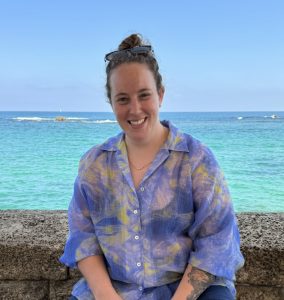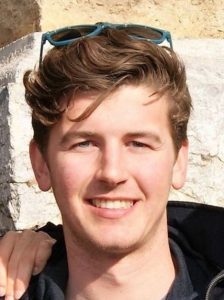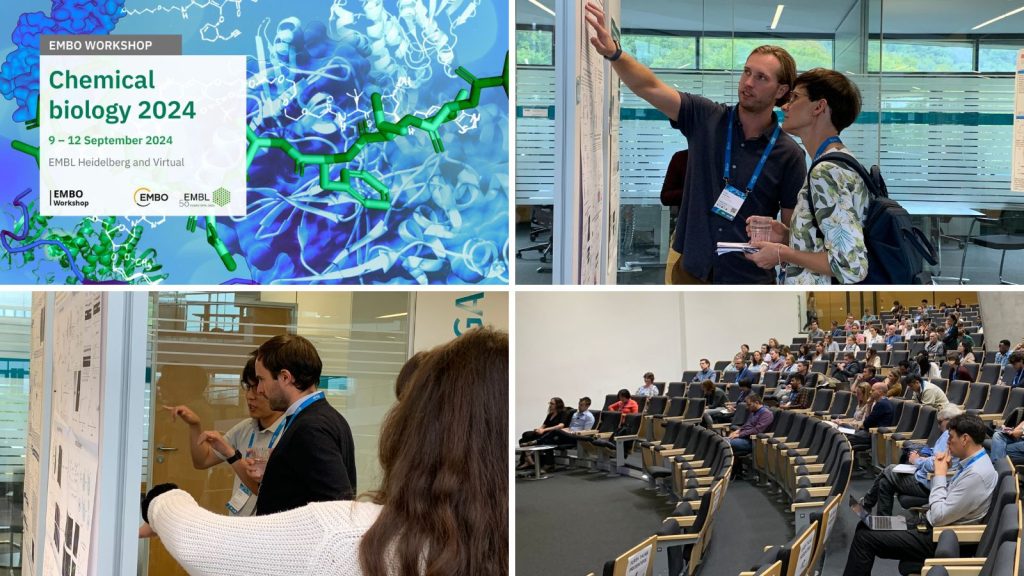Best poster prizes at ‘Chemical biology 2024’
The EMBO Workshop ‘Chemical biology 2024‘ is the largest and longest-standing conference in the field, providing a platform for inspiration, collaboration, and networking for researchers in academia and industry and took place last month at EMBL Heidelberg.
With 240 onsite participants, 58 virtual participants, and 17 fellowships provided by the ‘EMBL Corporate Partnership Programme‘ and ‘EMBO‘, we had the opportunity to welcome researchers from all over the globe to provide the possibility for every chemical biologist to meet and discuss with peers. The topcis were ranging from tool development to biological applications, from computational protein design to new drug modalities.
With a total of 113 posters available, we held three poster sessions during which the presenters could discuss their research — their work was then voted for by the poster committees formed by selected participants. There were six poster prizes awarded during the meeting. We are happy to announce the awarded abstracts!
Please give a round of applause to these brilliant minds!
Novel inhibitors for the efflux pump NorA to combat antimicrobial resistance
Presenter: Janine Gray
Authors: Janine Gray, Thomas Burden, Elizabeth Ledger, Konstantina Arvaniti, Thomas Lanyon-Hogg, Andrew Edwards, Edward Tate

Abstract:
The emergence of antimicrobial resistance (AMR) is a global health challenge expected to cause 10 million deaths per year by 2050, and the incidence of multidrug resistance has been accelerated by excessive prescription and misuse of existing antibiotics. This pressing problem is further exacerbated by a lack of financial incentives, and by regulatory barriers to novel antibiotic development. There is an urgent need for the development of novel antibiotics with a new mechanism of action to combat bacterial infections. A key facet of AMR is driven by expression of efflux pumps which extrude drugs from the bacterium, preventing them from reaching their targets at a sufficient concentration to inhibit growth. This presentation details the identification of the first potent and druglike inhibitors of the Staphylococcus aureus NorA multidrug efflux pump in a novel high-throughput phenotypic screen. NorA was established as the cellular target through genetic target identification strategies and assays demonstrating inhibition of substrate efflux. Initial SAR exploration improved potency to low nanomolar concentrations in NorA EtBr efflux and synergistic antibiotic susceptibility assays. Pharmacokinetic studies in vitro and in vivo demonstrated that the novel lead series was suitable for testing in animal models. Subsequent in vivo efficacy experiments validated NorA as a therapeutic target and established these compounds as potential therapeutics in combination therapy with existing antibiotics against resistant bacteria.
Rationally designed bifunctional ligands induce intracellular precipitation of homomeric protein targets
Presenter: Ella Livnah
Authors: Ella Livnah, Nir London

Abstract:
Homooligomeric protein assemblies are prevalent in the cell, spanning various functional classes from transcription factors, through to enzymes, channels and structural proteins. We sought to leverage the inherit homomeric structure of proteins for a new chemical knock-down modality, that obviates the need of a second effector proteins, or post-translational modification to induce its cellular degradation.
Our approach relies on a bifunctional molecule, presenting two copies of the same ligand, each able to bind a monomeric subunit of the target protein in an obligatory biological multimer, but cannot bind two sites on the same oligomer simultaneously. Thereby, each binding event present a new free ligand that can recruit a new oligomer. Consecutive binging events result in the formation of a protein polymer which becomes insoluble.
We demonstrated such compounds, we term PINCHs (Polymerization Inducing Chimeras) to achieve efficient induction of intracellular polymerization and precipitation of two select targets- Keap1 and BCL6, both homodimeric proteins. We show that in the PINCH-induced polymeric, insoluble form, the target is eliminated from the cell’s soluble fraction, and accumulates in the insoluble fraction, rendering the protein inactive. Keap1-targeting PINCH was shown to induce Keap1 polymerization in vitro, as well as in cells, and exhibited a longer duration of action compared to inhibition of Keap1 with its parent monomeric inhibitor in the cellular context. This approach takes advantage of inherent homo-dimeric biological assembly and can be rationally applied to additional proteins with symmetric multimeric structures, as we demonstrated. We have preliminary data showing that exact ternary complex formation is not required for precipitation, but linker optimization can in fact improve potency. We anticipate targeted induced aggregation to have a differentiated phenotypic profile and serve as an alternative modality to targeted inhibition or degradation.
Due to the confidentiality of the unpublished data, we cannot share the poster.
Boosting bioorthogonal click-to-release with hydroxylated aryl-tetrazines
Presenter: Patrick Keppel
Authors: Patrick Keppel, Martin Wilkovitsch, Barbara Sohr, Walter Kuba, Andreas Löffler, Stefan Kronister, Andres Fernandez del Castillo, Marion Goldeck, Rastislav Dzijak, Michal Rahm, Milan Vrabel, Dennis Svatunek, Jonathan Carlson, Hannes Mikula

Abstract:
Over the last decade, bioorthogonal bond-cleavage reactions have gained significant attention in chemical biology, representing a promising strategy to achieve in vivo click-triggered release and activation of target molecules. Various bioorthogonal bond-cleavage chemistries have been developed, including the groundbreaking discovery of tetrazine (Tz)-triggered “click-to-release” from substituted trans-cyclooctenes (TCO), offering unparalleled release capabilities. Substantial efforts have been made to understand the underlying mechanistic aspects, however, the cleavage performance of current tetrazines remains in its infancy and is often constrained by slow click reaction or by incomplete and/or slow release. While highly reactive aryl-tetrazines exhibit poor release after initial ligation, high release efficiency is restricted to low-reactive bis-alkyl tetrazines. By introducing hydroxyl groups onto aryl-tetrazine scaffolds to control post-click tautomerization, we achieved accelerated and near-quantitative click-to-release of cleavable trans-cyclooctenes. This is evidenced by (i) in situ bioorthogonal uncaging of a prodrug leading to a remarkable 300-fold turn-on of cytotoxicity, (ii) highly efficient intramitochondrial activation of a fluorogenic probe, and (iii) rapid intracellular cleavage of a ligand-dye conjugate.
Photocatalytic proximity labelling methods to investigate the DNA G quadruplex interactome
Presenter: Thomas Maher
Authors: Tomoya Kujirai, Haruhiko Ehara, Junko Kato, Kyoka Yamamoto, Seiya Hirai, Takeru Fujii, Kazumitsu Maehara, Akihito Harada, Lumi Negishi, Mitsuo Ogasawara, Mikako Shirouzu, Yuki Yamaguchi, Yasuyuki Ohkawa, Yoshimasa Takizawa, Shun ichi Sekine, Hitoshi Kurumizaka

Abstract:
Guanine rich sequences of DNA are capable of self-association in forming non-canonical secondary structures called DNA-quadruplexes (G4). They have been implicated with a range of biological processes, including transcription, replication, and genome instability, as well as diseases such as cancer and neurodegenerative conditions.1,2 Understanding how G4 structures interact with the intracellular environment has been critical in elucidating G4 function and the principal regulatory mechanisms of these interaction networks. Therefore, it is crucial to develop methods tailored to selectively identifying specific interactions of proteins with genomic loci in their native environment. Here we describe a photocatalytic proximity labelling (PL) strategy to interrogate the DNA G4 interactome, suitable for application in live cells. We have developed G4-specific probes functionalised with photocatalysts.3,4 These photocatalysts can activate substrate molecules to form reactive species capable of cross-linking with proximal proteins for analysis using quantitative proteomics. High binding affinities and selectivity for G4 structures were demonstrated for our probes before validating the ability of the PL platform to label a G4 specific protein in vitro. Quantitative proteomic experiments in live cells identified validated G4-binding proteins and putative interactors from various functional classes. Our study provides an alternative method to specifically detect G4-protein interactions and establishes ligand mediated PL as attractive platforms for probing nucleic acid-protein networks.
Due to the confidentiality of the unpVublished data, we cannot share the poster.
CycloSEL: Ultra-high throughput platform for the discovery of macrocyclictherapeutics
Presenter: J. Miguel Mata
Authors: J. Miguel Mata, Jingming Liu, Sebastian Pomplun

Abstract:
Macrocycles are promising drug modalities when it comes to addressing ‘undruggable’ targets. Their balance between selectivity, conformational dynamics, and physicochemical properties makes them attractive tools to target shallow and large interfaces that mediate interactions between biomolecules. Powerful molecular biology-based hit discovery strategies, such as phage- and mRNA-display, have been developed to enable the rapid discovery of macrocyclic peptides. These strategies are to date routinely used in academia and industry for a number of challenging drug targets. Despite the advances in library generation strategies, the scaffolds are always peptide-like with a limited amount of possible modifications. Furthermore, the genetic encoding tag represents a source of potential interference in the affinity selection step. Here, we present a novel discovery platform for fully synthetic and tag-free macrocycles, complying with drug-likeness properties in the beyond rule-of-5 space. We established robust macrocyclization strategies, based on solid support disulfide formation and validated on hundreds of sequences for efficiency. Later, these chemically prepared macrocycles, with virtually unlimited chemical space, can be decoded via tandem mass spectrometry, avoiding the need for any encoding tags. Compound linearization, needed for the decoding step, is achieved by disulfide reduction. Our platform enables the screenings of libraries with > 1 million macrocycles. These self-encoded libraries (SELs) have no genetic encoding tag, paving the way for selecting novel chemical matter targeting transcription factors or RNA-binding proteins, in addition to many other drug targets. In conclusion, our innovative platform for fully synthetic and tag-free macrocycles offers a promising avenue for targeting ‘undruggable’ biomolecules in drug discovery
Due to the confidentiality of the unpublished data, we cannot share the poster.
Phage-assisted evolution of switchable proteins
Presenter: Nicholas Southern
Authors: Nicholas Southern, Ann-Sophie Kroell, Jan Mathony, Dominik Niopek

Abstract:
Proteins are essential components in cells, involved in all major cellular functions including metabolism, cellular signaling, gene expression control, and motility. Allostery, the modulation of protein activity through conformational changes induced at a site distant from the active center, enables proteins to rapidly respond to endogenous or environmental cues. Single-component protein switches based on inducible allostery mediated by chemical or light triggers are powerful tools for dissecting cellular pathways and controlling cell behavior in synthetic biology. However, engineering these switches — often through receptor fusion or insertion into effector proteins — usually require extensive optimization to address issues such as disrupted enzymatic activity, system leakiness, and off-target effects. To tackle these challenges, we developed and employed a directed evolution approach based on Phage Assisted Non-Continuous Evolution (PANCE) to optimize effector-receptor couplings in allosteric protein switches. Our strategy involves exposing M13 phage encoding an engineered protein switch to consecutive rounds of mutagenesis, followed by positive and negative selection regimes in the presence and absence of the respective trigger. This process directly couples phage propagation to the performance of the protein switch, resulting in the accumulation of adaptative mutations that increase dynamic range and optimize protein activity. As a demonstration of this approach, we applied our PANCE strategy to the arabinose-responsive E. coli transcription factor AraC and chemo-optogenetic derivatives thereof, resulting in variants with extremely high potency and excellent switchability independent of its native inducer. Our research not only advances the engineering of single-component protein switches with unmet performance, but also advances our overall understanding of allostery as a key principle in living cells.
Due to the confidentiality of the unpublished data, we cannot share the poster.

Don’t miss out on the next edition! Sign up now on our events page to stay informed
The EMBO Workshop ‘Chemical Biology’ took place from 9 – 12 September 2024 at EMBL Heidelberg and virtually.